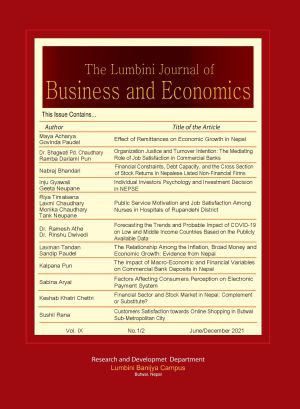Government Expenditure and Economic Growth: The Case of Nepal
DOI:
https://doi.org/10.3126/ljbe.v9i1-2.45994Keywords:
Recurrent expenditure, Capital expenditure, GDP, ARDL, Unit root test, Government expenditureAbstract
This paper examines the effect of recurrent and capital expenditures on output growth in Nepal over 45 years from mid-July 1975 to 2019. The autoregressive distributed lag (ARDL) model is applied to investigate the existence of the long-run and short-run relationships between the variables. Furthermore, this study uses the natural logarithm of GDP as a proxy for output growth, the natural logarithm of recurrent expenditure (REX), and capital expenditure (CEX) as the proxies for recurrent and capital expenditures respectively. The empirical results show that recurrent and capital expenditures are co-integrated with economic growth and they positively affect output growth in the long-run as well as short-run. Thus, it can be concluded that government expenditure is one of the major components of economic development and more spending should be directed towards important sectors such as infrastructural development and industrial development to accelerate economic growth.




